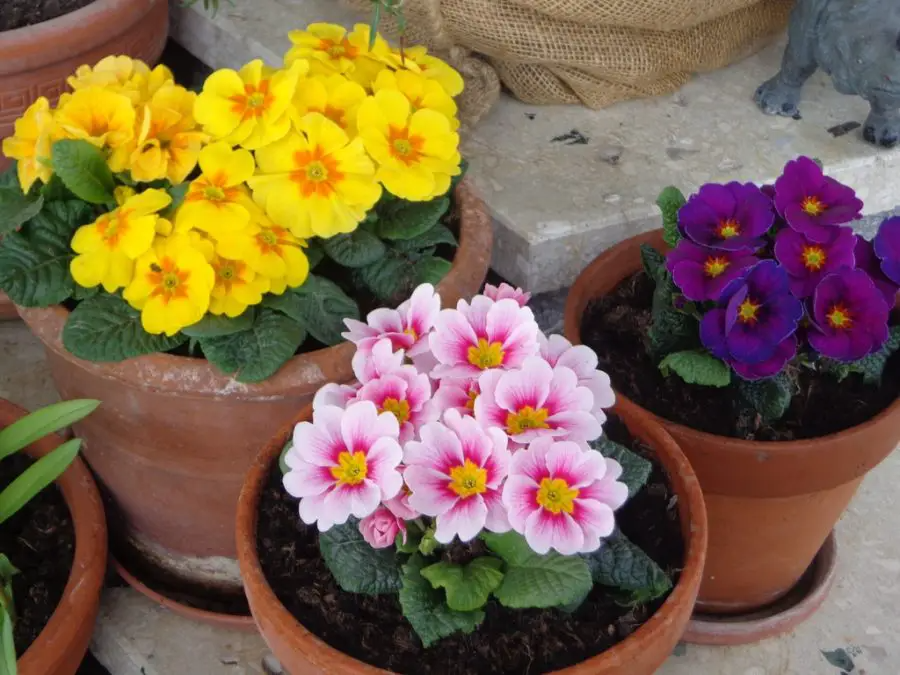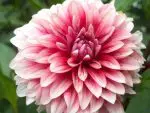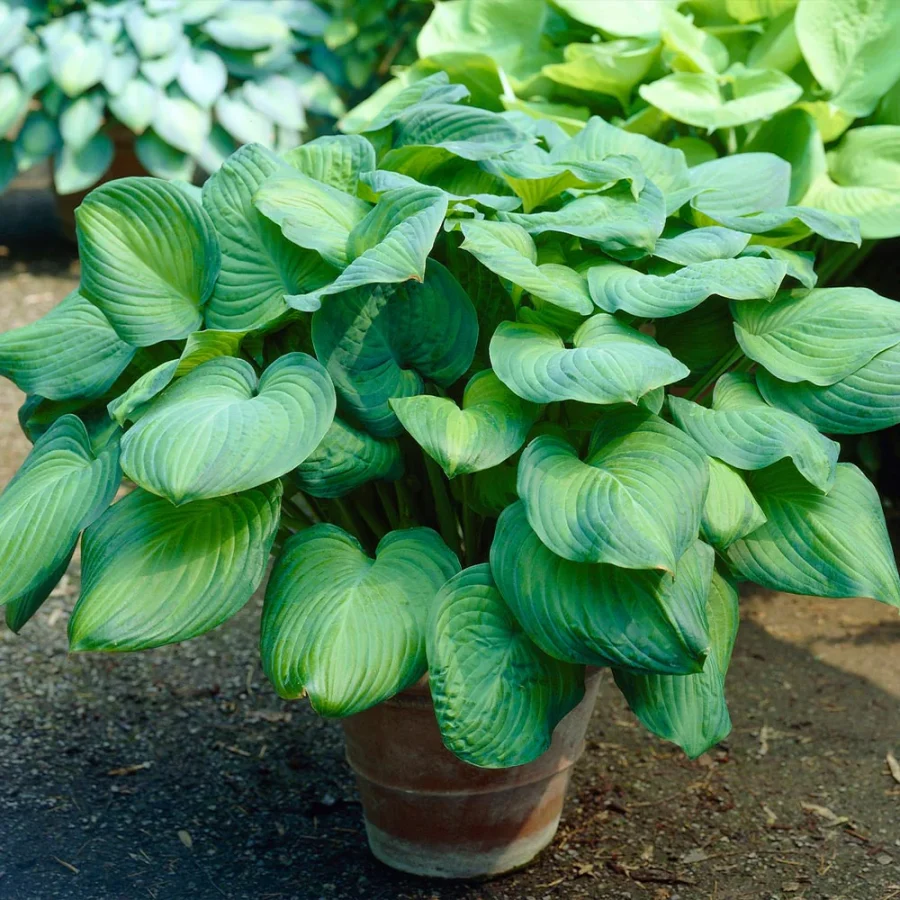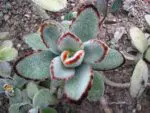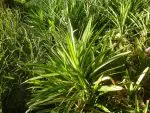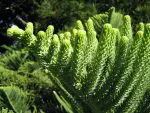This post contains affiliate links. If you buy something from one of our links we may earn a commission. Thanks
Discover the Best Soil for Dahlias in Pots with our comprehensive guide, covering coco coir, perlite, and more to help your Dahlia plants thrive and bloom beautifully!
The best soil for Dahlias in pots is a mix of coco coir and perlite, providing both moisture retention and good drainage. This blend ensures that the plant’s roots have access to consistent moisture without becoming waterlogged, contributing to healthier and more vibrant blooms.
If you’re looking to grow stunning Dahlias that’ll be the envy of your neighborhood, you’re in the right place!
The secret to flourishing Dahlia plants starts with selecting the best soil for Dahlias in pots.
In this guide, we’ll explore the benefits of using coco coir and perlite, while comparing them with peat-based potting mixes and garden soil.
So, let’s dive in and unlock the true potential of your potted Dahlias with the perfect soil mix!
What Is The Best Soil for Dahlias in Pots?
Welcome to our ultimate guide on the Best Soil for Dahlias in Pots!
As any gardening enthusiast knows, choosing the right soil can make all the difference in the health and beauty of your Dahlias.
In this article, we’ll discuss the advantages of using coco coir and perlite, compare them to peat-based potting mixes and garden soil, and provide tips on how to grow and care for your potted Dahlias.
Get ready to explore a world of vibrant blooms and healthy Dahlia plants as we delve into the perfect soil for your pots!
Dahlias: Popular Flowering Plants for Pots and Containers
Dahlias have long been a favorite among gardeners, thanks to their captivating colors, diverse sizes, and showy blooms.
These lovely flowering plants are not only ideal for garden beds, but they’re also perfect for pots and containers and they provide long-lasting cut flowers too.
With a bit of care and attention, you can create a stunning display on your patio or balcony, bringing a burst of color and life to your outdoor space.
Soil Selection: The Key to Healthy Growth and Beautiful Blooms
One of the most crucial aspects of growing Dahlias in pots is selecting the right soil.
The proper soil mix ensures that your Dahlia plants receive the nutrients they need while also providing adequate drainage and aeration.
By choosing the right soil, you’re setting the stage for healthy growth and an abundance of beautiful blooms that’ll leave your neighbors in awe.
Coco Coir and Perlite: The Soil Superstars
In this guide, we’re going to focus on two soil amendments that have proven highly effective for growing Dahlias in pots: coco coir and perlite.
We’ll delve into their benefits and explain why they’re superior to other options like peat-based potting mixes and garden soil.
By the end of this article, you’ll have a clear understanding of why coco coir and perlite are the go-to choices for Dahlia enthusiasts looking to create the most stunning potted displays.
Understanding Dahlia Needs
So, you’re ready to grow some dazzling Dahlias in pots, but where to start?
First, let’s get to know these beauties a bit better by understanding their specific needs.
In this section, we’ll cover the essentials, from sunlight requirements and planting times to the importance of well-drained soil and choosing the right Dahlia varieties for your space.
By learning about your young plants preferences, you’ll be well-equipped to create the perfect environment for them to thrive and bloom spectacularly!
Basking in the Sun: Full Sun Requirements for Dahlias
Dahlias love to soak up the sun! These vibrant beauties require at least 6 to 8 hours of full sun each day to grow healthy and produce an abundance of blooms.
Make sure to choose a spot for your pots in your flower garden that receives ample sunlight, and you’ll be rewarded with a dazzling display of Dahlia flowers.
Don’t plant them too early in cold soil. Dahlias come from a warm climate so wait until the soil has warmed to 60 degrees before setting out Dahlias.
Dahlia Blooms: Growing Season and Planting Time
The growing season and planting time for Dahlias are crucial factors in their successful cultivation.
Dahlias thrive in the warmer months and should be planted after the last frost date. The best time is typically in late spring or early summer.
This ensures that the soil temperatures are warm enough for the tubers to grow without the risk of damage from the danger of frost.
By planting your Dahlias at the right time, you’ll get the best results and ensure a vibrant show of flowers throughout the summer and into early fall.
Drainage is Key: The Importance of Well-Drained Soil
Well-drained soil is essential for healthy Dahlia plants. Dahlias dislike sitting in wet or soggy soil, which can lead to root rot and other issues.
When planting Dahlias in pots, it’s vital to use a soil mix that provides excellent drainage, allowing excess water to escape and preventing the tubers from becoming waterlogged.
This is where our soil superstars, coco coir and perlite, come into play, offering the perfect balance of moisture retention and drainage.
Diverse Dahlia Delights: Varieties and Their Specific Needs
Dahlias come in a wide array of varieties, each with its unique characteristics and needs.
Some varieties grow taller, requiring staking or support, while others remain compact and bushy.
Dahlias also range in bloom size, from petite pompons to show-stopping dinner plate varieties.
When choosing Dahlias for your pots, consider factors such as available space, desired bloom size, and color preferences.
By selecting the right Dahlia varieties for your space and catering to their specific needs, you’ll create a breathtaking display that showcases these stunning flowers at their best.
Petite Perfection: Dwarf Dahlias for Pots
For those with limited space or looking to create a charming display in pots and containers, dwarf Dahlias are an excellent choice.
These compact beauties typically grow between 12 and 24 inches tall, making them perfect for smaller spaces such as balconies, patios, or even window boxes.
Despite their smaller stature, dwarf Dahlias still produce an impressive array of vibrant blooms, adding a delightful splash of color to your outdoor area.
By opting for dwarf Dahlia varieties, you can enjoy all the captivating charm of Dahlias, even in the coziest of spaces!
Coco Coir and Perlite: The Best Soil for Dahlias in Pots
Ready to dive into the world of coco coir and perlite? You’re about to discover why these two soil amendments are the ultimate dynamic duo for growing Dahlias in pots.
In this section, we’ll explore the benefits of using coco coir and perlite, how they promote healthy Dahlia growth, and why they outshine other soil options like peat-based potting mixes and garden soil.
Let’s unlock the secrets to the Best Soil for Dahlias in Pots and set your Dahlias on the path to success!
Coco Coir: Sustainable Moisture Management
One of the key benefits of coco coir is its excellent water retention properties.
It can hold up to 8-10 times its weight in water, ensuring that your Dahlias receive consistent moisture without becoming waterlogged.
Additionally, coco coir is a sustainable and eco-friendly alternative to peat moss, as it’s made from the husks of coconuts – a renewable resource.
By choosing coco coir, you’re not only giving your Dahlias the hydration they need but also supporting sustainable gardening practices.
Perlite Power: Drainage and Aeration for Healthy Roots
Perlite is a lightweight volcanic rock that improves drainage and aeration in your potting mix.
Its porous nature allows excess water to drain away, preventing root rot and promoting healthy root development.
With the addition of perlite to your soil mix, your Dahlias will benefit from the perfect balance of moisture and air circulation, ensuring a strong and robust root system.
Crafting the Perfect Potting Mix: Ratios and Organic Matter
To create the ideal potting mix for your Dahlias, start with a base of coco coir and add perlite to improve drainage and aeration.
A good starting ratio is 70% coco coir and 30% perlite. You can also add additional organic matter such as compost or well-aged manure to provide essential nutrients for your plants.
This custom blend will offer your Dahlias the optimal environment for healthy growth and vibrant blooms.
Peat-Based Potting Mixes: A Comparison
Now that we’ve explored the benefits of coco coir and perlite, let’s take a closer look at peat-based potting mixes and see how they stack up.
In this section, we’ll discuss the pros and cons of using peat-based mixes, the environmental concerns surrounding peat moss, and how to amend these mixes for better Dahlia growth.
Let’s dive into the world of peat-based potting mixes and see if they’re a suitable match for your Dahlias.
The Peat Debate: Pros and Cons of Peat-Based Potting Mixes
Peat-based potting mixes have long been a popular choice among gardeners, thanks to their ability to retain moisture and provide a stable growing environment.
However, they do have some drawbacks when it comes to growing Dahlias in pots.
Peat-based mixes can become compacted over time, reducing aeration and potentially leading to root suffocation.
They also have a naturally acidic pH, which may require adjustment for optimal Dahlia growth.
Environmental Concerns: The Impact of Peat Moss
One of the primary concerns with using peat-based potting mixes is the environmental impact of peat moss extraction.
Peat moss is harvested from peat bogs, which are important carbon sinks and ecosystems.
Harvesting peat moss contributes to the release of stored carbon, accelerating climate change, and destroying valuable habitats for a variety of plant and animal species.
Amending Peat-Based Mixes: Enhancing Dahlia Growth
If you choose to use a peat-based potting mix for your Dahlias, there are ways to amend it for better growth.
To improve drainage and aeration, consider adding perlite or coarse sand to the mix.
Additionally, you may need to adjust the pH by adding lime or other alkaline materials to create a more suitable environment for Dahlias.
By making these adjustments, you can create a more hospitable growing medium for your potted Dahlias.
Dahlia pH Preferences: Finding the Perfect Balance
One key aspect of growing healthy Dahlias is providing them with the right soil pH.
Dahlias prefer a slightly acidic to neutral pH range of about 6.3 to 6.8.
This is where coco coir truly shines! Unlike peat moss or peat-based soil mixes, which can be too acidic, coco coir naturally falls within the ideal pH range for Dahlias and doesn’t require adjustment.
This means you can skip the hassle of pH testing and amendments, and focus on nurturing your Dahlias in a perfectly balanced growing environment.
Let’s explore how coco coir’s natural pH levels make it the top choice for growing Dahlias in pots.
Why Garden Soil Isn’t Suitable for Pots
You might be wondering, Can I just use garden soil for my potted Dahlias?
While it might seem like a simple solution, there’s a good reason why garden soil isn’t the best choice for pots.
In this section, we’ll delve into the challenges of using garden soil in containers and explain why it’s not ideal for growing healthy, flourishing Dahlias.
Let’s uncover the truth about garden soil and why a custom potting mix is the way to go for your Dahlia plants.
Garden Soil Challenges: Compaction, Drainage, and Nutrient Imbalances
Using garden soil in pots can lead to several issues that may hinder the growth of your Dahlias.
Garden soil tends to compact in containers, resulting in poor drainage and reduced air circulation around the roots.
Additionally, garden soil may contain nutrient imbalances or even pathogens that could negatively impact your Dahlias’ health.
Breathe Easy: The Role of Drainage and Air Pockets
Healthy Dahlia roots require a delicate balance of moisture and air pockets in the soil.
Good drainage prevents waterlogged conditions that can lead to root rot, while air pockets ensure sufficient oxygen is available to support root respiration.
Garden soil often lacks the structure needed to provide this balance, making it less than ideal for potted Dahlias.
Even loamy soils will compact too much and clay soil will become a brick inside a pot.
The Right Potting Soil: The Key to Potted Dahlia Success
Choosing the right potting soil is the best way to ensure success when growing Dahlias in pots.
A well-formulated potting mix, like the one we discussed earlier with coco coir and perlite, provides the ideal balance of water retention, drainage, and aeration that Dahlias need to thrive.
By opting for a suitable potting mix instead of garden soil, you’re setting your potted Dahlias up for a vibrant and healthy growing season.
Selecting the Right Pot for Your Dahlias
Choosing the right pot for your Dahlias is just as important as selecting the perfect soil.
The right pot will not only complement the beauty of your Dahlias but also provide the necessary support and conditions for healthy growth.
In this section, we’ll discuss essential factors like drainage holes, pot size, and type to help you make the best choice for your potted Dahlias.
Drainage Holes: Essential for Healthy Roots
When selecting a pot, ensure it has sufficient drainage holes in the bottom of the pot to prevent waterlogging and root rot.
Adequate drainage is vital for Dahlias, as their tuberous roots need air pockets and well-drained soil to thrive.
Pot Size: Matching Your Dahlia’s Needs
Choose a pot size that matches the growth requirements of your specific Dahlia variety.
Dwarf Dahlias, for instance, are great for smaller pots and containers, while taller varieties require larger, more stable pots to support their height and root system.
As a general rule, the pot should be at least 12 inches deep and wide to accommodate the growth of most Dahlias.
Pot Type: Material Matters
The material of your pot also plays a role in your Dahlia’s success.
Plastic pots are lightweight and retain moisture well but may become unstable with taller varieties.
Terra cotta pots are heavier and provide better stability but can dry out more quickly, requiring more frequent watering.
It’s a good idea to use terra cotta and ceramic pots for tall varieties like Dinner Plate Dahlias.
Experiment with different pot materials to find the one that best suits your Dahlia’s needs and your personal preferences.
Dahlia Care and Maintenance in Pots
Now that we’ve explored the perfect soil mix for your potted Dahlias, it’s time to discuss how to keep them happy and thriving throughout the growing season.
In this section, we’ll dive into the essential aspects of Dahlia care and maintenance in pots, touching on topics like watering, fertilizing, and dealing with common pests and diseases.
With these tips in hand, you’ll be well-equipped to nurture your Dahlias and enjoy their stunning blooms all season long.
Let’s get started on mastering Dahlia care in pots!
Watering Wisdom: Keeping Dahlias Hydrated
When it comes to watering Dahlias in pots, it’s essential to strike the right balance.
Water your Dahlias regularly, but avoid overwatering and leaving them sitting in excess water.
As a general rule, water when the top of the soil feels dry to the touch an inch down.
The best thing to do is stick your finger into the top inch of soil and check before you water.
If the soil is still moist wait a day or two before watering.
Keep in mind that the frequency may vary depending on factors like pot size, weather conditions, and the specific needs of your Dahlia variety.
Feeding Your Dahlias: Fertilizer Choices for Container-Grown Plants
For container Dahlias, it’s important to provide the right nutrients for healthy growth.
Use a balanced, slow-release fertilizer or consider natural options like worm castings, compost, coffee grounds, and crushed eggshells for an eco-friendly approach.
Always follow the recommended application rates, as over-fertilizing can lead to excessive foliage growth at the expense of blooms.
Deadheading and Pruning: Encouraging Bushier Plants and More Blooms
Regularly deadheading your Dahlias by removing spent blooms will encourage more flowers and extend the blooming season.
Pruning can also help promote a bushier plant with more branching, leading to even more stunning blooms.
Be sure to use clean, sharp tools when pruning to avoid damaging the plant or spreading disease.
Pest and Disease Protection: Staying Ahead of Spider Mites and Powdery Mildew
Potted Dahlias can sometimes fall prey to pests like spider mites or diseases like powdery mildew.
Keep a close eye on your plants and take action at the first sign of trouble. For spider mites, try using insecticidal soap or introducing natural predators like ladybugs.
For powdery mildew, ensure good air circulation and avoid watering the foliage.
If necessary, use a fungicide specifically formulated for Dahlias to treat the affected plants.
Frequently Asked Questions (FAQs)
As you embark on your potted Dahlia adventure, it’s natural to have some questions along the way.
In this section, we’ve compiled some of the most frequently asked questions about growing Dahlias in pots, covering topics such as planting, care, and even some troubleshooting tips.
We’re here to help you become a Dahlia expert and ensure you’re well-prepared to grow these beautiful blooms successfully.
So, let’s dive into the world of Dahlia FAQs and find the answers you’re looking for!
Q: Is Miracle Grow potting soil good for Dahlias?
A: Yes, Miracle Grow potting soil can be suitable for Dahlias, but you may need to amend it with perlite for better drainage.
Q: Do Dahlias like deep pots?
A: Dahlias prefer pots with enough depth to accommodate their tuberous roots and provide room for growth, generally at least 12-18 inches deep.
Q: How deep do you plant Dahlia tubers in pots?
A: Plant Dahlia tubers about 4-6 inches deep in pots, with the eye facing upward.
Q: Are coffee grounds good fertilizer for Dahlias?
A: Yes, used coffee grounds can be a good source of nitrogen for Dahlias, but use them sparingly and mix with other organic materials.
Q: Should I soak Dahlia tubers before potting up?
A: Soaking Dahlia tubers for a few hours before potting can help rehydrate them and promote quicker sprouting.
Q: Should you deadhead Dahlias?
A: Yes, deadheading Dahlias by removing spent blooms encourages more flowering and extends the blooming season.
Q: Do Dahlias in pots like full sun?
A: Yes, Dahlias in pots prefer full sun for at least 6-8 hours a day to produce optimal blooms.
Q: What is the best fertilizer for container Dahlias?
A: A balanced, slow-release fertilizer is ideal for container Dahlias, but natural options like worm castings and compost with coffee grounds and crushed eggshells can also be used.
Q: How do you keep potted Dahlias alive?
A: Provide the right soil mix, water regularly without overwatering, ensure proper drainage, and maintain a balanced fertilizing schedule.
Q: Can you leave Dahlias in pots?
A: Yes, Dahlias can be left in pots, but in colder climates, you’ll need to protect them during winter by bringing them indoors or providing insulation.
Q: What is the best homemade fertilizer for Dahlias?
A: A mix of worm castings, compost, coffee grounds, and crushed eggshells can provide a nutrient-rich homemade fertilizer for Dahlias.
Q: Are eggshells good for Dahlias?
A: Yes, crushed eggshells provide calcium, which can help prevent blossom end rot and improve overall plant health.
Q: Is it better to water Dahlias in the morning or evening?
A: It’s better to water Dahlias in the early morning to minimize the risk of fungal diseases and reduce water loss due to evaporation.
Q: How do you wake up Dahlia tubers?
A: Wake up Dahlia tubers by placing them in a warm, well-lit area for a few weeks before planting.
Q: Will dried-out Dahlia tubers grow?
A: If the tubers are not severely desiccated, they may still grow. Soak them in water for a few hours to rehydrate before planting.
Q: Is Epsom salt good for Dahlias?
A: Epsom salt can provide magnesium, which can help improve flower production, but use sparingly and only if a deficiency is detected.
Q: What happens if you don’t divide Dahlias?
A: If you don’t divide Dahlias, the clumps can become crowded, leading to reduced blooms and increased risk of disease.
Q: How long do potted Dahlias last?
A: With proper care, potted Dahlias can bloom from mid-summer to the first frost, and the tubers can be stored for replanting next season.
Best Soil for Dahlias in Pots Final Thoughts
In conclusion, growing Dahlias in pots can be a rewarding and enjoyable experience, bringing vibrant colors and beautiful blooms to your garden or outdoor space.
Choosing the right soil, like a coco coir and perlite mix, is crucial for promoting healthy growth and ensuring stunning flowers.
Remember to consider factors like drainage, pH levels, and the specific needs of your chosen Dahlia variety when selecting the best soil for your potted Dahlias.
Caring for your Dahlias involves regular watering, proper fertilizing, and diligent maintenance, such as deadheading and protecting against pests and diseases.
By following these tips and addressing the FAQs, you’ll be well-equipped to grow thriving Dahlias in pots and enjoy their breathtaking beauty throughout the growing season. Happy gardening!
Choosing the right soil for Dahlias in pots is crucial for ensuring healthy growth, optimal blooming, and overall plant success.
Using a coco coir and perlite-based mix provides the ideal balance of water retention, drainage, and aeration, promoting strong root development and stunning blooms.
As you nurture your Dahlias, don’t hesitate to experiment and tailor the soil and care practices to the specific needs of your chosen Dahlia varieties.
By doing so, you’ll create the perfect environment for your potted Dahlias to thrive and showcase their captivating beauty.
Read more about Dahlia Care in Pots: 25 Growth Tips Comprehensive Guide

